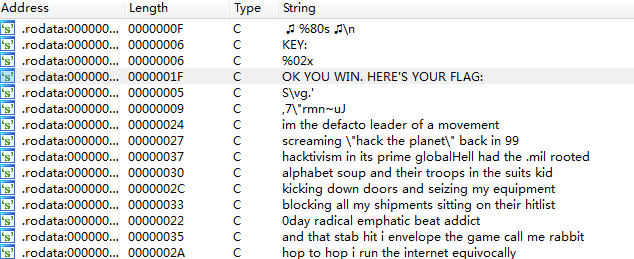LD_PRELOAD
Principle¶
Under normal circumstances, Linux dynamic loader ld-linux (see man page ld-linux (8)) will search and load the shared link library file required by the program, and LD_PRELOAD is an optional environment variable, including One or more paths to the shared link library file. The loader will load the shared link library specified by LD_PRELOAD before the C language runtime, which is called preloading (preload).
Preloading means that its functions will be called before the function of the same name in other library files, so that the library functions can be blocked or replaced. The path of multiple shared link library files can be colon or space.To distinguish. Obviously not affected by LD_PRELOAD, only those statically linked programs.
Of course, to avoid malicious attacks, the loader will not be preloaded with LD_PRELOAD in the case of ruid != euid.
Read more: https://blog.fpmurphy.com/2012/09/all-about-ld_preload.html#ixzz569cbyze4
Example¶
Let's take the 2014 Hack In The Box Amsterdam: Bin 100 as an example. Download the topic: hitb_bin100.elf
This is a 64-bit ELF file. The results are shown below:

The program seems to be printing some sentences all the time. And there are no signs of stopping. Let's open it with IDA. First press Shift+F12 to find the string.

Obviously, apart from the sentences that have been printed, we found some interesting strings:
.rodata:0000000000400A53 00000006 C KEY:
.rodata:0000000000400A5F 0000001F C OK YOU WIN. HERE'S YOUR FLAG:
We came to the key code according to the cross-reference of OK YOU WIN. HERE'S YOUR FLAG: (I deleted some unnecessary code).
int __cdecl main(int argc, const char **argv, const char **envp)
{
qmemcpy(v23, &unk_400A7E, sizeof(v23));
v3 = v22;
for ( i = 9LL; i; --i )
{
* (_DWORD *) v3 = 0;
v3 + = 4;
}
v20 = 0x31337;
v21 = time(0LL);
do
{
v11 = 0LL;
do
{
v5 = 0LL;
v6 = time(0LL);
Srand(233811181 - v21 + v6); // Initialize the random number seed
v7 = v22[v11];
V22[v11] = rand() ^ v7; // pseudo-random number
v8 = (&funny)[8 * v11];
while ( v5 < strlen(v8) )
{
v9 = v8 [v5];
if ( (_BYTE)v9 == 105 )
{
v24[(signed int)v5] = 105;
}
else
{
if ( (_DWORD)v5 && v8[v5 - 1] != 32 )
V10 = __ctype_toupper_loc(); // uppercase
else
V10 = __ctype_tolower_loc(); // lowercase
v24[(signed int)v5] = (*v10)[v9];
}
++ v5;
}
v24[(signed int)v5] = 0;
++v11;
__printf_chk(1LL, "Uranium %80s uranium 玕n", v24); // garbled is actually a note
sleep(1u);
}
while ( v11 != 36 );
--v20;
}
while ( v20 );
V13 = v22; // key is stored in the v22 array
__printf_chk(1LL, "KEY: ", v12);
do
{
v14 = (unsigned __int8)*v13++;
__printf_chk(1LL, "%02x ", v14); // output key
}
while ( v13 != v23 );
v15 = 0LL;
putchar(10);
__printf_chk(1LL, "OK YOU WIN. HERE'S YOUR FLAG: ", v16);
do
{
V17 = v23[v15] ^ v22[v15]; // XOR with the value of key
++ v15;
Putchar(v17); // output flag
}
while ( v15 != 36 );
Putchar(10); // output line break
result = 0;
return result;
}
The whole code flow is mainly to continuously output the sentences in funny, output the key after satisfying the loop condition, and XOR the flag to get the value of flag.
But we can see that the number of times the whole loop is relatively small. So we can use some methods to make the loop faster. For example, I manually patch it, not let the program output the string (actually printfThe time consumption is quite a lot.) The second is to use LD_PRELOAD to make the program's sleep() invalid. It can obviously save time.
The process of manual patching is relatively simple. We can find the code location and then modify it with some hex editors. Of course, we can also use IDA to do patch work.
`asm
.text:00000000004007B7 call ___printf_chk
.text:00000000004007BC xor eax, eax
Point the cursor on `call ___printf_chk`, then select the menu `Edit->Patch Program->Assemble` (of course you can use other patch methods. The effect is the same). Then modify it to `nop(0x90)`, as follows Figure

Modify the assembly code between `4007B7` and `4007BD` to `nop`. Then select the menu `Edit->Patch Program->Apply patches to input file`. Of course, it is best to make a backup (ie check) `Create a backup`), then click OK (I renamed to `patched.elf`, download link: [patched.elf](https://github.com/ctf-wiki/ctf-challenges/blob/ Master/reverse/linux-re/2014_hitb/patched.elf)).

Now go to the `LD_PRELOAD` section. Here we simply write the c code, download link: [time.c](https://github.com/ctf-wiki/ctf-challenges/blob/master/reverse/linux-re/ 2014_hitb/time.c)
``` c
static int t = 0x31337;
void sleep(int sec) {
t += sec;
}
int time() {
return t;
}
Then use the command gcc --shared time.c -o time.so to generate the dynamic link file. Of course, the download link is also given: time.so
Then open the linux terminal and run the command: LD_PRELOAD=./time.so ./patched.elf

After a while, you can hear the sound of the CPU running wildly, and then the flag will come out soon.
本页面的全部内容在 CC BY-NC-SA 4.0 协议之条款下提供,附加条款亦可能应用。